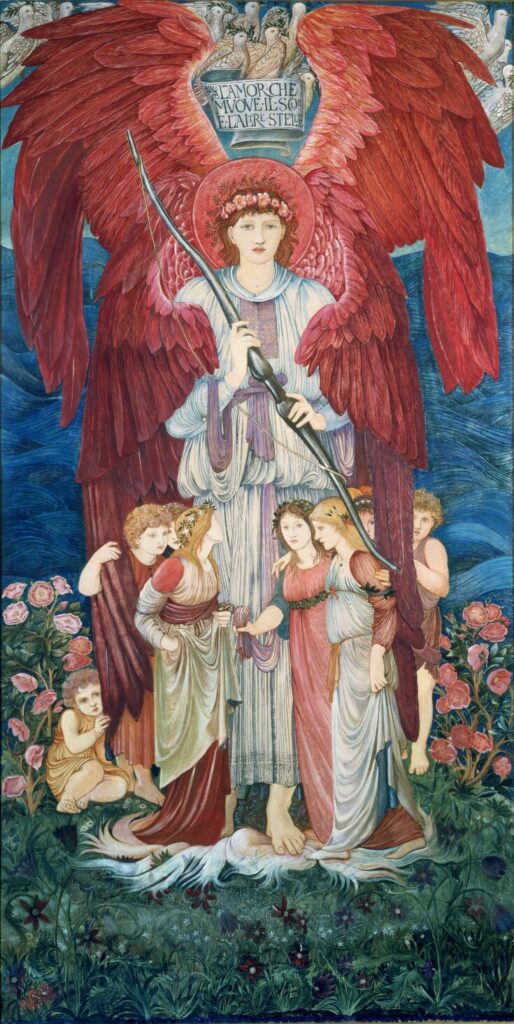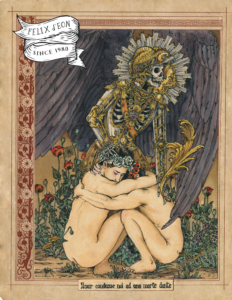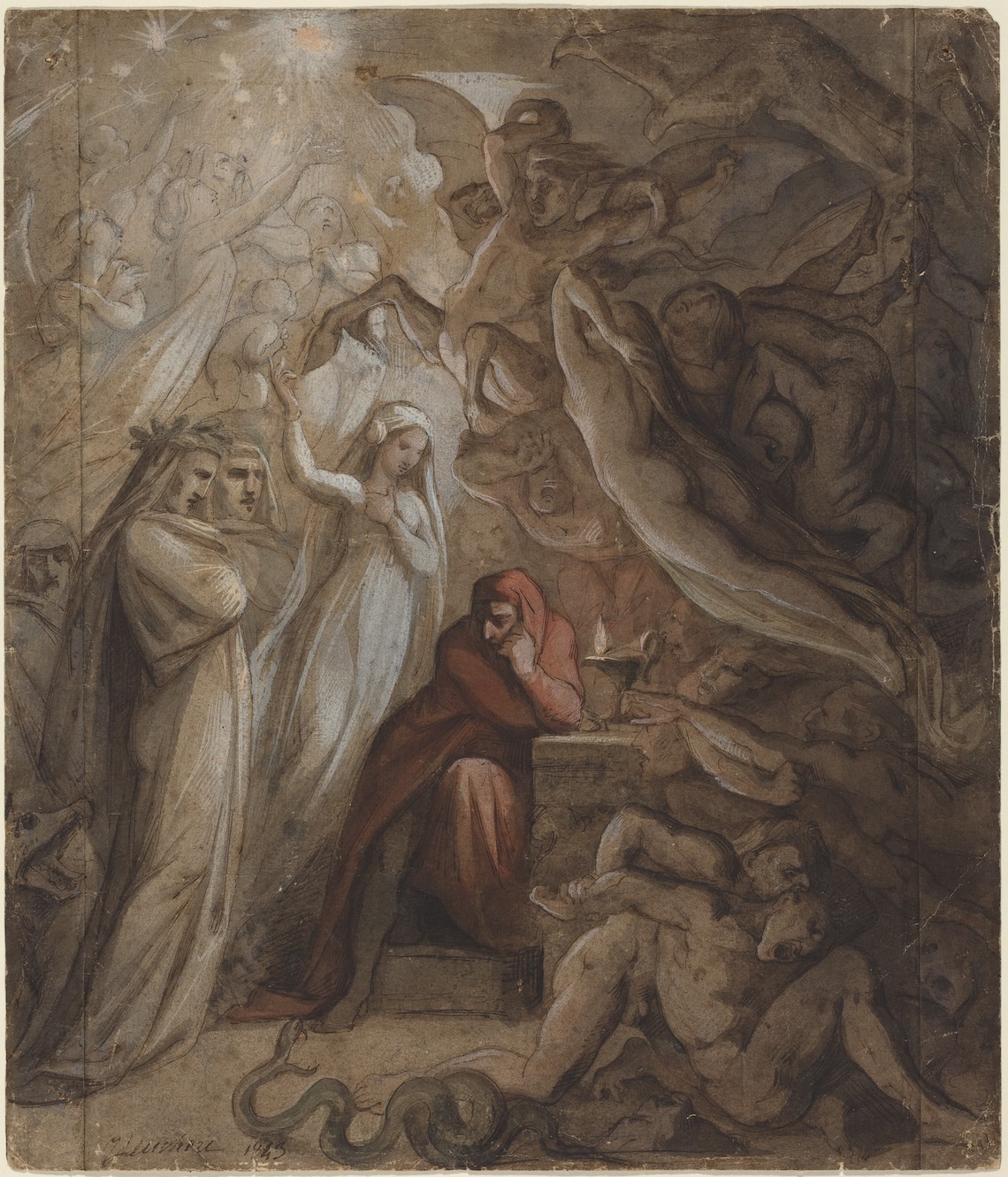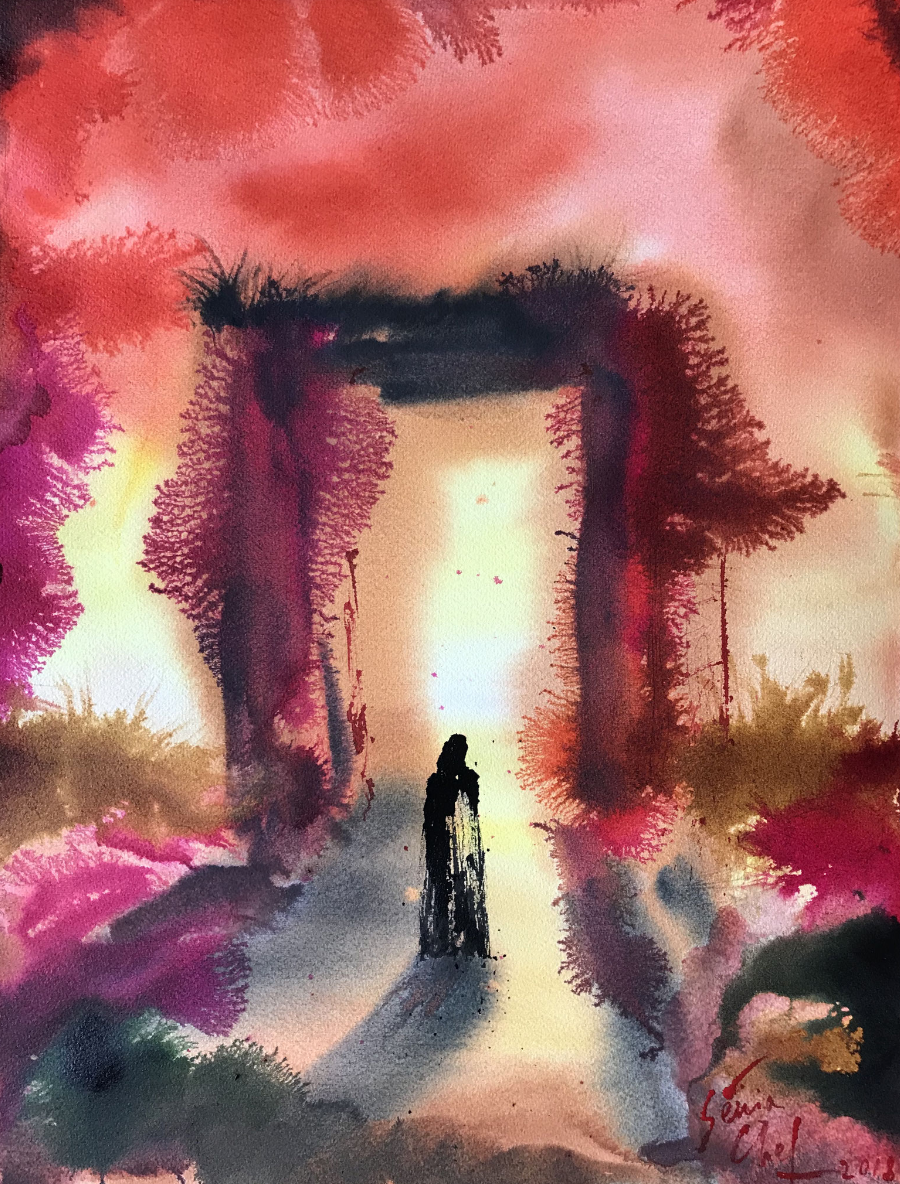“This watercolour is inscribed with a line from the Commedia (The Divine Comedy) by the Italian poet Dante Alighieri (1265-1321): ‘L’amor che muove il sole e l’altre stelle’ (The love that moves the sun and other stars’). It is a highly finished design for a large needlework panel, but now it is considered to be a great watercolour in its own right. Burne-Jones (1833-1898) made several such designs, some of which were worked up into tapestry or needlework by the young Frances Graham, with whom Burne-Jones later fell in love.
[. . .]
“At the time of this painting, Burne-Jones was also working on his famous King Cophetua and the Beggar-maid. The model for the beggar-maid was Frances Graham, and Burne-Jones had fallen in love with her. In 1883, to his great dismay, she announced her impending marriage, and he painted in anenomes – the symbol of rejected love and death – around the figure of the beggar-maid. Here too, in Love, the colours of anemones predominate, rich scarlets and purples against cobalt and turquoise. Just as Dante lost his beloved Beatrice, and Rossetti his Lizzie, so Burne-Jones, on more than one occasion, lost his heart to those like Frances who were unable to return his love.” —Sir Edward Coley Burne-Jones, Love, Victoria & Albert Museum Collections, 1880s (retrieved March 26, 2024)





